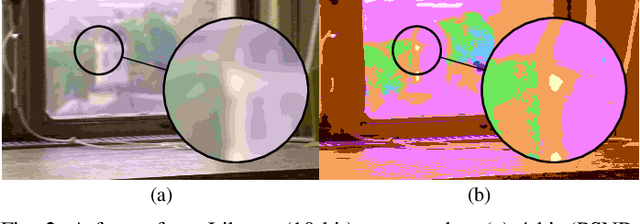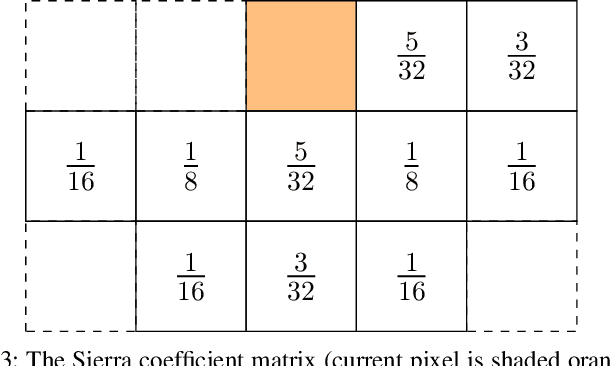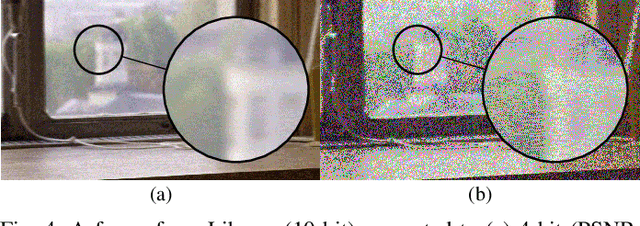Alex Mackin
A Subjective Study on Videos at Various Bit Depths
Mar 18, 2021



Abstract:Bit depth adaptation, where the bit depth of a video sequence is reduced before transmission and up-sampled during display, can potentially reduce data rates with limited impact on perceptual quality. In this context, we conducted a subjective study on a UHD video database, BVI-BD, to explore the relationship between bit depth and visual quality. In this work, three bit depth adaptation methods are investigated, including linear scaling, error diffusion, and a novel adaptive Gaussian filtering approach. The results from a subjective experiment indicate that above a critical bit depth, bit depth adaptation has no significant impact on perceptual quality, while reducing the amount information that is required to be transmitted. Below the critical bit depth, advanced adaptation methods can be used to retain `good' visual quality (on average) down to around 2 bits per color channel for the outlined experimental setup - a large reduction compared to the typically used 8 bits per color channel. A selection of image quality metrics were subsequently bench-marked on the subjective data, and analysis indicates that a bespoke quality metric is required for bit depth adaptation.
 Add to Chrome
Add to Chrome Add to Firefox
Add to Firefox Add to Edge
Add to Edge